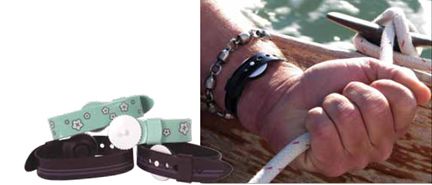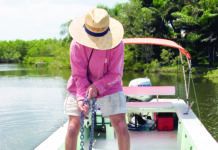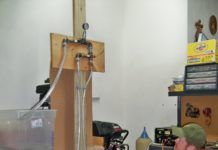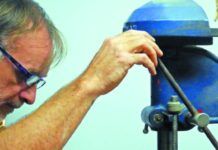
432
Although most sailors know all too well what it means to be nauseous, few may know that the word “nausea” actually derives from the Greek word for “ship”: naus. Apparently even the ancient Greeks had to hang over the rail occasionally.
Always on the lookout for drug-free anti-seasickness options, Practical Sailor recently tested a new one designed to ease seasickness by activating acupressure points on the wrists. PsiBands are similar to other acupressure bands, including Davis Instruments’ Queaz-Away ($10, www.davisnet.com), which PS reviewed in the December 2009 issue. Acupressure bands are designed to stimulate specific nerves located at the inner wrists. Applying pressure at these points can provide relief from nausea.
PsiBands were developed by two women looking for a way to ease their pregnancy-related nausea. The bands resemble plastic watchbands and are made from latex-free, medical-grade synthetic rubber. A dial on the inside of the band allows the wearer to adjust the pressure.
PsiBands (pronounced “sigh” bands) fit wrists from 5½ to 8½ inches around; they are waterproof, reusable, FDA-OKed, and drug-free. The PVC- and BPA-free bands come in five colors and are designed for relief of nausea from motion sickness, pregnancy, chemotherapy, and anesthesia. PsiBands retail for $15 per set and are available at stores like REI and CVS, and online retailers like Amazon.com and Target.com.
None of our testers became nauseous while wearing the PsiBands during sea trials, but they did note that the bands were comfortable, easy to don and adjust, and well designed with quality materials. We particularly liked that the bands were functional in the rain and after swimming, unlike the cloth, elastic wristbands, which become water-logged.
Survey Says
Our December 2009 report on drug-free solutions to seasickness looked at acupressure wristbands and other remedies, including ginger products and herbal teas. While drug-free remedies may be effective for some sailors or in some conditions, most of our 2009 survey respondents found them to be ineffective or only effective in mild cases. More than half of the 37 survey respondents said they did not know anyone who regularly used non-drug seasickness therapies, with the exception of ginger.
Most shared the opinion of Susanne Huber-Curphey, who leads all-women offshore charters: “It only works if you really believe in it…We tried ginger, the wristbands, gallons of herbal tea, and all helped those who believed in it.” Based on our survey and experiences, ginger (lozenges, drinks, etc.) proved to be the most effective non-drug therapy in providing relief of mild seasickness.
PS also reviewed over-the-counter and prescription seasickness drugs in the January 2009 issue. We looked at nine anti-emetic medications, including Bonine, Dramamine, Phenegran, and Stugeron. Testers determined that the best anti-seasickness drug depended on the patient, and how they chose to balance potential side effects and efficacy.
Research Shows
One of our longtime subscribers—Dr. James Li, an emergency physician and clinical researcher in Maine—recently tipped us off to current medical research on motion-sickness management. He said the research report, published in the prestigious British Medical Journal (December 2010, www.bmj.com), was one of the most unbiased sources of medical research that he had read.
The research found that using behavioral treatments, such as habituating someone to the environment, was the most effective solution. Habituation—exposing someone to the environment that makes them sick until they become accustomed to it—has few bad side effects, but it can be unpleasant and time consuming, according to the report. Another drawback was that the habituation was “motion specific”—so getting used to car sickness did not make one immune to seasickness.
In our experience, most seasick sailors acclimate to the motion after about three days at sea. Slowing the boat down, heaving to for a few hours, and improving cabin ventilation also can help alleviate symptoms.
The journal also concluded that hyoscine (also known as Scopolamine) is an effective preventive medicine but that “evidence to support the use of other drugs, taking into account the tradeoff between efficacy and adverse effects, is weaker. Management of motion sickness with traditional remedies such as ginger and acupressure bands has not been shown to be effective.”
Bottom line
Non-drug nausea remedies have been shown to be less effective than pharmaceuticals. However, they have no side effects, so if they work for you, using them has no downside.
Every boat should have seasickness treatments onboard. Acupressure wristbands work for some sailors sometimes, so adding PsiBands to the onboard first-aid kit is worth the $15, in our opinion. They are easy to use and more comfortable and stylish than elastic bands—a bonus when trying to persuade a child or teen to strap them on.




































